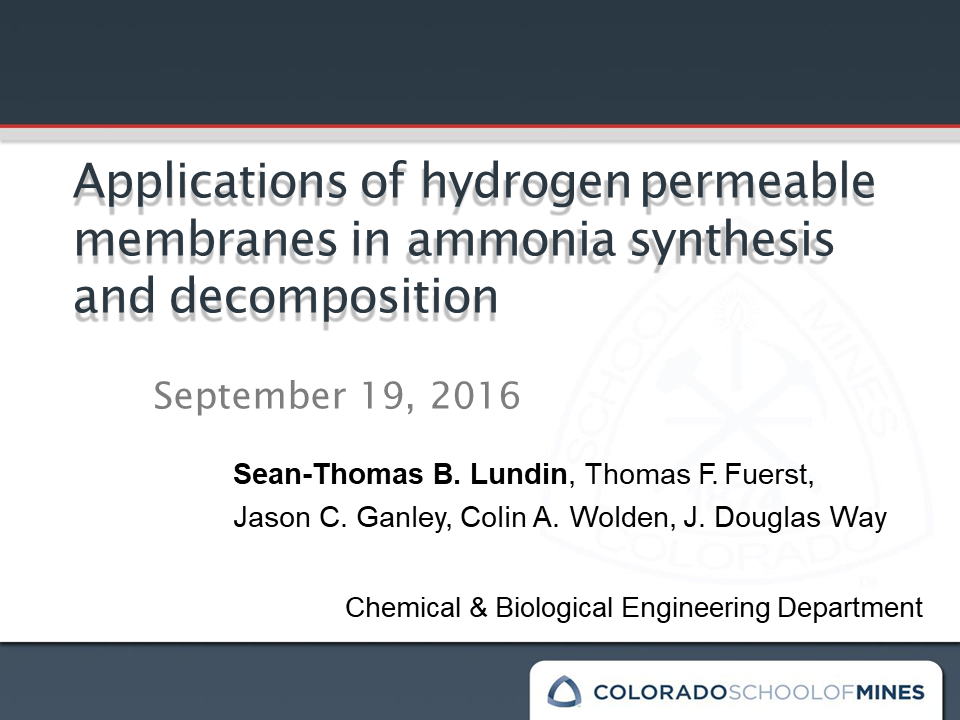Presentation
Yittria-Stabilized Zirconia (YSZ) Supports for Low Temperature Ammonia Synthesis
NH3 is important as the raw material for fertilizer production and high hydrogen density (17.7 wt. %) energy carrier. Conventionally, NH3 is synthesized through the well-known Haber-Bosch process at 400-500°C and P~150 bar. Both critical reaction conditions and massive production (145 mt NH3 in 2014 globally) make it one of the most energy extensive process, consuming 1-2% of the world’s total energy expense. Here we introduce YSZ as a more active Ru catalyst support than traditionally used supports such as Al2O3. The addition of Cs promoter increased rates an order of magnitude higher by reducing the apparent activation energy from…



